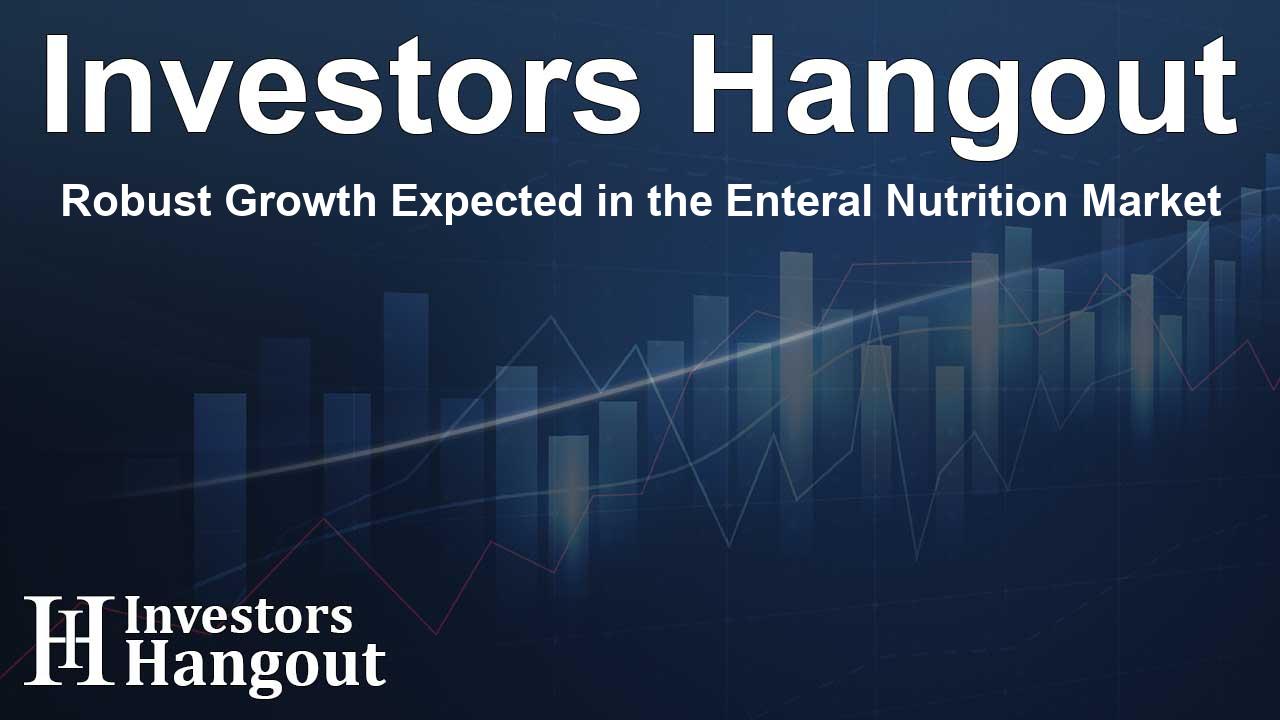Robust Growth Expected in the Enteral Nutrition Market

Understanding the Enteral Nutrition Market Landscape
The enteral nutrition market is experiencing robust growth, with projections suggesting it will reach a remarkable US$ 17.33 billion by 2031. This growth is influenced by various factors, primarily the increasing prevalence of chronic diseases and the growing elderly population worldwide. Healthcare providers are increasingly recognizing the importance of enteral nutrition as a critical component in the management of patients' nutritional needs.
Factors Driving Market Growth
Rising Chronic Diseases
Chronic diseases such as cancer, diabetes, and neurological disorders are on the rise globally. These conditions often impair individuals' ability to consume food orally, necessitating effective nutritional interventions. Enteral feeding, which delivers essential nutrients directly into the gastrointestinal tract, is becoming a preferred option to support these patients. Additionally, the convenience of enteral nutrition can lead to shorter hospital stays and reduced overall healthcare costs. There is a heightened awareness of clinical nutrition, making it a focal point amongst healthcare providers, caregivers, and families.
Demographics of Aging Population
As the global population ages, the incidence of age-related diseases is rising parallelly. Older adults frequently face challenges like swallowing difficulties and cognitive impairments that hinder their nutritional intake. Enteral nutrition serves as a vital solution, ensuring they receive essential nutrients necessary for health maintenance and recovery. Furthermore, ongoing advancements in enteral feeding technologies and formulations tailor specifically to this demographic are enhancing the effectiveness of nutritional care.
Innovations and Technology in Enteral Nutrition
The enteral nutrition market is witnessing technological breakthroughs that are contributing to its growth. Innovations like Smart Enteral Feeding Pumps are becoming increasingly standard, ensuring patients receive precise dosages while being monitored in real-time. The introduction of real-time tube placement verification systems further ensures that the feeding process is both safe and effective. These advancements enhance the overall patient experience and improve outcomes significantly.
Market Segmentation Insights
The enteral nutrition market can be segmented based on various criteria:
- Product Type: Includes nasogastric and sipping feed types. The nasogastric segment currently holds the largest market share.
- Application: Segments encompass a variety of health issues, with gastrointestinal disorders leading the way.
- Age Group: The adult demographic predominates in consumption, although pediatric needs are also recognized.
- Distribution Channel: Hospital pharmacies play a crucial role in delivering enteral nutrition solutions effectively.
Geographical Market Insights
Geographically, North America has consistently led the enteral nutrition market in terms of revenue. However, the Asia Pacific region is poised for significant growth, expected to register the highest compound annual growth rate (CAGR) during the forecast period. This growth is attributed to increasing healthcare investments and the rising awareness of the importance of clinical nutrition across various healthcare sectors.
Competitive Landscape and Key Players
The enteral nutrition market is characterized by a presence of numerous key players, including Nestle SA, Abbott Laboratories, and Danone SA. These companies are continually innovating and expanding their product offerings, with a strong focus on personalized and disease-specific nutritional solutions. The trend toward integrating technology into feeding devices is pushing companies to develop more user-friendly and effective solutions.
Conclusion: The Path Ahead for Enteral Nutrition
The enteral nutrition market's future looks promising, driven by the increasing prevalence of chronic diseases and an aging population that requires specialized nutritional support. As healthcare providers continue to emphasize home care solutions and improve patient outcomes, enteral nutrition will increasingly be integral to long-term healthcare strategies. This demand is likely to grow, ensuring that enteral nutrition remains a vital resource in healthcare and nutritional management.
Frequently Asked Questions
1. What is the expected market size for enteral nutrition by 2031?
The enteral nutrition market is projected to reach US$ 17.33 billion by 2031.
2. What factors are driving the growth of the enteral nutrition market?
The growth is primarily driven by the rising prevalence of chronic diseases and an increasing elderly population.
3. What innovations are influencing the enteral nutrition market?
Innovations such as Smart Enteral Feeding Pumps and real-time tube placement verification are significantly influencing the market.
4. Which regions are leading in the enteral nutrition market?
North America currently leads the market, followed closely by the Asia Pacific region, which is expected to have the highest growth rate.
5. Who are the key players in the enteral nutrition market?
Key players include Nestle SA, Abbott Laboratories, and Danone SA among others.
About The Author
Contact Lucas Young privately here. Or send an email with ATTN: Lucas Young as the subject to contact@investorshangout.com.
About Investors Hangout
Investors Hangout is a leading online stock forum for financial discussion and learning, offering a wide range of free tools and resources. It draws in traders of all levels, who exchange market knowledge, investigate trading tactics, and keep an eye on industry developments in real time. Featuring financial articles, stock message boards, quotes, charts, company profiles, and live news updates. Through cooperative learning and a wealth of informational resources, it helps users from novices creating their first portfolios to experts honing their techniques. Join Investors Hangout today: https://investorshangout.com/
The content of this article is based on factual, publicly available information and does not represent legal, financial, or investment advice. Investors Hangout does not offer financial advice, and the author is not a licensed financial advisor. Consult a qualified advisor before making any financial or investment decisions based on this article. This article should not be considered advice to purchase, sell, or hold any securities or other investments. If any of the material provided here is inaccurate, please contact us for corrections.
